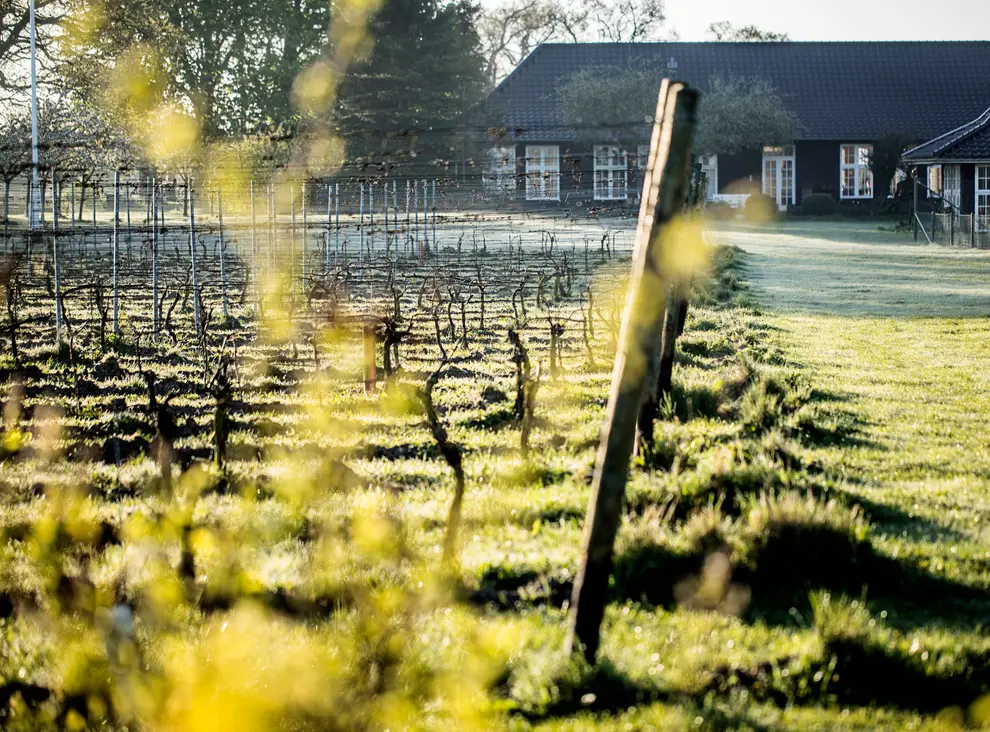How Nordic wines became the latest trend for savvy travellers
Thanks to an emerging set of forward-thinking winemakers, Nordic wine-tasting breaks are becoming ever more commonplace, finds Lucy Thackray


Your support helps us to tell the story
From reproductive rights to climate change to Big Tech, The Independent is on the ground when the story is developing. Whether it's investigating the financials of Elon Musk's pro-Trump PAC or producing our latest documentary, 'The A Word', which shines a light on the American women fighting for reproductive rights, we know how important it is to parse out the facts from the messaging.
At such a critical moment in US history, we need reporters on the ground. Your donation allows us to keep sending journalists to speak to both sides of the story.
The Independent is trusted by Americans across the entire political spectrum. And unlike many other quality news outlets, we choose not to lock Americans out of our reporting and analysis with paywalls. We believe quality journalism should be available to everyone, paid for by those who can afford it.
Your support makes all the difference.Picture the scene. After a sunny afternoon of walking the vineyards, you settle in to taste their fruits. Swilling your glass of white to see the honeyed colour, you tilt it gently and slurp your first sip of Denmark’s finest.
Or Sweden’s. Or even Finland’s. It’s not so far-fetched – in fact, winemaking is already a fresh and surprising part of the travel scene in the Nordic nations.
The fact that winemakers have begun to spring up across these chilly northern nations, yielding a decent number of bottles each year, is sadly – though not surprisingly – due to climate change.
If temperatures continue rising at their current rate, it’s predicted that Denmark’s climate will be more like northern France’s in 50 years’ time.
If temperatures continue rising at their current rate, it’s predicted that Denmark’s climate will be more like Northern France’s in 50 years’ time
While wines are being made in Sweden, Finland and even Iceland, Denmark has the most advanced wine scene, with nearly 100 winemakers in operation – Sweden has more like 30, and Finland just a handful.
This is still small fry compared to the traditional European markets of France, Spain and Italy – France alone has some 27,000 wineries.
Yet savvy oenophiles are beginning to invest in vineyards in the region. As the Nordic countries heat up, so will their more southerly neighbours – higher temperatures are already bringing forward the grape harvest and turbo-charging the ripening process in some places.
Right now, it’s more of a novelty than a booming moneymaker of a market. You’ll pay somewhere between $30-40 for a bottle of wine produced in Denmark or Sweden, easily six times what you’d pay on the ground in more traditional European wine regions.

Nordic wines are mostly whites, with many made from one type of grape – solaris, a varietal that withstands cooler climates well. It makes for tasty dessert wines as well as crisp apple-and-honey whites. However, winemakers are experimenting with blends and other varieties as their regions get warmer.
So what should we expect from the taste? “The main thing about cooler climate regions is that their wines tend to be higher in acidity, which makes a wine feel fresh and lively, but can be overwhelming,” says Aleesha Hansel, a wine expert and blogger.
“As a newcomer I would recommend starting with wines from grapes that are known to have medium levels of acidity, or are early ripening – like madeline angevine, or solaris.
“As for Nordic reds, expect light-medium bodied. These will not be your big, bold bruisers as they just don’t have enough warmth and sun to ripen into such. But I think this is a region to watch for sparkling wine.”
And only one Scandi tipple has so far achieved the distinction of a DOP (Protected Designation of Origin, an industry stamp of quality): the Dons sparkling wine, made outside the Danish city of Kolding.
“As famous regions such as Champagne warm up, countries with cooler climates like England and Scandinavia will start to come into their own,” says Hansel.
Their DOP means Dons wines are a protected variety, much like champagne, and can only be made in this region. Their maker, Skaersogaard Vin, produces red, white, rose, sparkling and dessert wine at its winery 140 miles west of Copenhagen. You can come and visit its 30,000 vines and shop at its onsite boutique on the first Wednesday of every month, April to November.
As famous regions such as Champagne warm up, countries with cooler climates like England and Scandinavia will start to come into their own
Meanwhile at By Stokkebye, on Denmark’s Funen island, owners Jacob and Helle have developed sustainable winemaking techniques to produce some 25,000 bottles a year. And at Dyrehøj Vineyard on the Røsnæs peninsula, you can take weekly tours or get a look at the production process by appointment.
Finland is also dabbling in winemaking – though mainly using native fruits such as lingonberries, blueberries and cloudberries, rather than grapes (I know what you’re thinking – put away those Moira Rose gifs).
Uusi-Yijälä Berry organic farm is one of the newest openings at which to try them, with varieties ranging from dry table wines to sweet dessert wines. In Finland’s Eastern Lakeland district, you can take a Wine In the Woods tour, a 30-minute walking tour through pristine woodland, followed by a 90-minute tasting session, also in the forest, learning about Finnish wines with a sommelier.
Over in Iceland, the “world’s northernmost winery”, Westfjords, is similarly using bilberry and crowberry to make fruit wines. Sadly, it’s had to postpone its big opening due to the pandemic.
Yet you can already sleep over at some of the loveliest wineries. Flädie Mat & Vingård is a farm and vineyard near Malmö, Sweden, with 27 tastefully chintzy rooms and nifty packages including a vineyard tour, accommodation, wine tasting and breakfast. At Lerkekaasa Vineyard in Norway, you can stay in a giant converted wine barrel between exploring the vines, while at Ästad Vingård, an organic Swedish winery, there are cute mossy-roofed cabins and a “floating sauna” and spa set on a lake.

Unsurprisingly following the New Nordic movement, Flädie Mat also has a corker of a restaurant, with seasonally changing, intricately presented dishes. You could have your city break in Malmö (18km away) or Copenhagen (64km), then cycle out to “wine country” for a farm stay, a standout meal and a few glasses of an under-radar wine. The wine movement seems a natural progression from the region’s wave of star chefs.
“Our ambition is to do for white and sparkling wine what Noma did for food,” says Jacob Stokkebye of By Stokkeby, referencing the original New Nordic “it” restaurant. “Most people still haven’t bought into the idea of Danish wine yet, but that’s our target.”
The wineries are set to become part of the rising trend for summer breaks in Nordic countries, which have become increasingly popular with those seeking lakeside cabins or an island-hopping journey.
In the meantime, you can buy the best of the region online, at nordicvineyards.com – and dream about your in-person tastings as you sip your ahead-of-the-pack, cold-weather wine.
Join our commenting forum
Join thought-provoking conversations, follow other Independent readers and see their replies
Comments